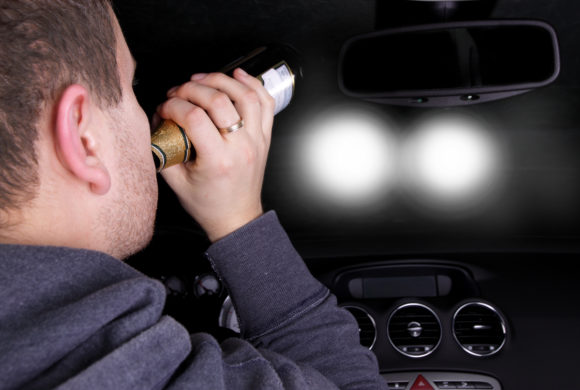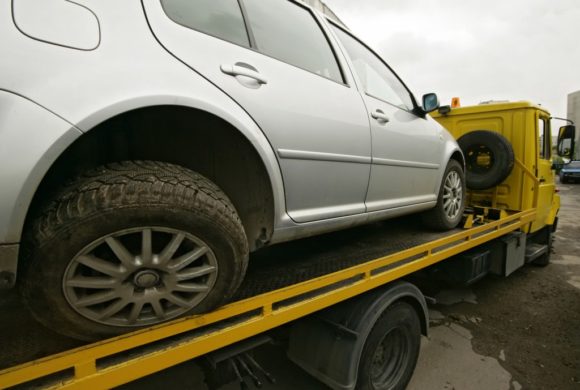
by Queener Law | Jan 18, 2015 | Auto Accident, DUI, Tennessee
When people choose to climb behind the wheel after drinking, they put the lives of everyone else on the road in danger. Many automobile accident attorneys Gallatin know that in a split second, a bad decision can lead to a catastrophic accident. That is what happened to a young Tennessee teen celebrating spring break with his friends in Panama Beach. According to the Panama City News Herald, the 18-year-old had a brief interaction with law enforcement when he backed up into another vehicle approximately 30 minutes before the fatal crash occurred. Although the teen admitted that he was slightly buzzed from drinking, he climbed behind the wheel again. He then continued to drive with a blood alcohol content level of 0.159 percent. That was when he allegedly fell asleep while driving and smashed into another car, killing the 22-year-old driver of the vehicle.
Rather than try the now 19-year-old as a youth and sentence him to receive treatment, the judge presiding over the case ordered the boy to spend 10 years in prison for DUI manslaughter. The teen is mandated to create a talk on how the fatal crash has influenced his life, and present it to the Bay County Chamber of Commerce. He must also talk to high school students about the dangers of drinking and driving at least twice a year.
Teen driver alcohol consumption
Teenager motorists and alcohol are a deadly combination. The National Highway Traffic Safety Administration reported that while traffic accidents were the leading cause of teen fatalities in 2011, nearly one-quarter of those accidents involved alcohol. Inexperience and the inability to make wise choices in certain situations, makes teenage drivers three times more likely than experienced drivers to be involved in a serious car accident, according to the Centers for Disease Control and Prevention. Alcohol can make the situation even worse.
DUIs change lives
Mothers Against Drunk Driving reported that 10,076 people were killed in drunk driving auto accidents in 2013, and another 290,000 people were seriously injured. In Tennessee alone, 295 people were fatally injured in DUI accidents in 2012, which was a 14 percent increase from the previous year. Unfortunately, drunk driving cases are familiar territory for automobile accident attorneys in Gallatin.
Injured victims of drunk driving collisions may find it helpful to partner with automobile accident attorneys in Gallatin. Some people may be eligible to receive compensation for their medical expenses, property damage and lost wages from work.

by Queener Law | Jan 16, 2015 | Auto Accident, Tennessee
Although talking or texting on a cellular device may be one of the most common forms of distracted driving, there are many other activities that drivers engage in that can be considered distracting and dangerous as well. An auto collision accident involving distracted driving is a case that a Nashville car accident lawyer would be familiar with. All forms of distracted driving can be arranged into three main categories, according to Distraction.gov. These include:
- Visual distractions
Any activity that requires a driver to remove his or her eyes from the road is considered a visual distraction. This includes looking away from the road to adjust the radio, change a CD, dial a phone number, read a text or even search for an item in the glove compartment. A study performed by the Virginia Tech Transportation Institute found that people who text and drive remove their eyes from the road for an average of five seconds. That is long enough for a car going 55 mph to travel the length of a football field.
- Manual distractions
Manually distractive tasks occur when a driver removes his or her hands off of the steering wheel. Whether drivers are reaching for their cellphones or eating, they do not have full control over their car because they are using their hands to do something else. Some other manual distractions include picking up items off of the floor, handing items to passengers in the backseat, drinking and updating social media profiles while driving.
- Cognitive distractions
A Nashville car accident lawyer knows that one of the most overlooked, yet deadly forms of driver interference are cognitive distractions. These distractions occur when motorists take their mental focus off of driving and attempt to multitask. According to studies evaluated by the National Safety Council, the human brain is incapable of multitasking, or effectively completing two complex tasks at once. Instead, the mind quickly switches back and forth from one task to the other. This leaves moments where the motorist isn’t concentrating on driving at all. It creates a sort of mental blindness where drivers are unable to process up to 50 percent of the information in their driving environment.
Many distracted driving tasks can be categorized into more than one form of distraction. Texting and talking on a cellphone is considered especially dangerous because it involves all three types of distractions. The Virginia Tech Transportation Institute found that when drivers perform manual-visual tasks, they are three times more likely to be involved in an auto collision.
People who have been involved in a distracted driving collision often turn to an established Nashville car accident lawyer for legal assistance and to receive compensation for their injuries, lost wages and property damage.

by Queener Law | Dec 23, 2014 | Auto Accident, Tennessee
The few moments following a car accident can be extremely stressful and overwhelming, especially if there are injuries or deaths involved. Even minor fender benders can place a significant amount of pressure on Tennessee motorists who may have to file accident claims with their insurance company.
While some motorists may believe that they can handle a car accident on their own, it is extremely important to call law enforcement and let them perform a full car accident investigation. The information from the investigation may prove vital when motorists are filing insurance claims or discussing the accident with an attorney.
Evidence at the scene and vehicle evidence
Law enforcement officers are trained in the correct way to identify and collect evidence. Crashforensics.com states that law enforcement will look at evidence at the site of the accident such as skid marks, gouge marks, point of impact, scrub marks and final resting position. Skid marks could indicate to law enforcement that the driver of that vehicle was speeding, following the other vehicle too closely or was distracted. The point of impact helps officers reconstruct the events that led up to the accident.
In some cases, law enforcement will conduct a car accident reconstruction to determine exactly what happened during the collision. As part of the reconstruction, lights, steering, tires, suspension, brakes and other key components of the vehicle’s mechanical structure are checked to determine if an equipment malfunction may have been the cause of the accident. Not only is the vehicle that was involved in the crash inspected, but the driver is also evaluated to ensure they are in full compliance with the law.
Witness statements
Witness statements are extremely valuable in a law enforcement investigation, as they can be used to corroborate the evidence collected at the scene. For example, witnesses who saw a driver texting or speeding could be used along with skid marks found at the accident site to show that the driver was indeed at fault.
Hit-and-run accidents and uninsured motorists
Motorists who are involved in a car accident where the negligent party is uninsured will need a report from law enforcement in order to file an uninsured motorist claim. When a hit-and-run accident occurs, the perpetrator is often left unidentified, which can make it extremely difficult to receive compensation for any injuries or property damage that occurs. However, an accident report can increase an accident victim’s chances of receiving the compensation he or she needs and deserves.
More than 386,000 Tennessee motorists were involved in motor vehicle accidents in 2013, according to the Tennessee Department of Safety and Homeland Security. Over 60,000 of those accidents involved physical injuries and 977 resulted in fatalities. If a car accident is caused by driver distraction, speeding or erratic behavior, accident victims are better able to prove negligence and seek compensation in a case that has been evaluated by law enforcement.

by Queener Law | Dec 22, 2014 | Auto Accident, Tennessee
Thousands of motor vehicle accidents occur each year in Tennessee. Recently, WIJHL reported that a car in Nashville hit another car, which had stopped in the lane of traffic. The driver of the stopped car, a university student, told law enforcement that he had been studying for finals and that he could have been asleep. The other vehicle actually flipped over after the impact. While neither driver was hurt, significant damage had been caused to both vehicles. It is unknown whether the driver of the stopped car will face criminal charges.
In situations like these, the driver who caused the car accidentmay or may not face criminal charges. People often believe that if a driver isn’t cited for the accident, they may not be able to seek compensation. However, this is not entirely true. It is possible to file a personal injury claim against a negligent driver to cover expenses related to property damages, medical bills, lost wages from work and the emotional trauma they have suffered.
Elements of negligence
When people are filing a liability for personal injury claim in a Tennessee court of law, they will need to have evidence that shows the driver was acting negligently. Negligence occurs when a driver engages in certain acts, such as drinking and driving, speeding or texting while driving that puts other drivers in danger.
Under contributory negligence, people who have contributed in some way to an accident may be unable to collect compensation from the other person involved in the collision. This holds true even if the other party involved in the incident was largely to blame. For example, if one driver is speeding and crashes into another driver who is not wearing a seatbelt and sustains injuries, the driver who failed to wear their seatbelt would not be entitled to compensation.
Here in Tennessee, if two people are equally at fault for causing the accident, neither is eligible for damages. This is referred to as proportional comparative fault. However, if one person can show that the other driver is 51 percent responsible, then that person may be able to seek damages.
Case in point
A comprehensive evaluation of accident reports from one major U.S. metropolitan area found that an alarming number of vehicular pedestrian accidents resulted in no charges or penalties imposed on the negligent drivers. The advocacy organization that initiated the study found that even when the drivers were committing serious traffic violations, including running stop signs, speeding and failing to yield for people using the crosswalk, they faced no criminal actions for hitting and injuring someone.
When a motorist’s negligent behaviors cause a tragic car accident, victims have the right to hold that motorist financially accountable.

by Queener Law | Dec 21, 2014 | Auto Accident, Tennessee
After a severe storm in early November left Tennessee roadways covered with snow and ice, and had law enforcement officers responding to more than 140 traffic accidents, many Tennessee motorists are preparing for possible storms ahead, according to Commercial Appeal News. Icy roads can increase the risk of car accidents, serious injuries and death for those who do not know how to navigate the roads safely in inclement weather conditions.
According to the National Highway Traffic Safety Administration, 286 people in Tennessee lost their lives in fatal motor vehicle accidents during the winter months of 2012. Car accidents and deaths caused by bad weather are completely preventable. The American Safety Council recommends that motorists implement the following practices into their traveling routine in order to stay safe on the roadways this winter.
Motorists should winterize their vehicles
Drivers should ensure that their vehicles are ready for the ice and snow by having their oil, lights, tires, tire pressure, brakes, ignition system, battery, exhaust system, heater and defroster checked. The vehicle’s tires must have sufficient tread, as icy roads can dramatically affect a vehicle’s ability to brake. Reduced tire traction can lead to skidding and sliding, which can lead to a car accident.
Motorists should slow down
Speeding is one of the most common causes of winter-time car accidents, according to AAA. Motorists should reduce their speed to approximately half of the posted speed limit or even less depending on the specific road conditions. Drivers may want to increase their following distance and take turns gently in order to prevent an unnecessary collision.
Motorists should stay alert
Not only is distracted, drowsy and impaired driving extremely dangerous during fair weather driving conditions, but during stormy and icy weather, these hazards can become much more deadly. In order to ensure that their full concentration is on the road ahead, motorists should avoid talking on a cellphone, eating, drinking, operating navigation devices, reading, handling passengers in the backseat or adjusting the CD player while driving, as reported by distraction.gov.
Motorists should stay in control
Staying in control of a vehicle on icy roads can be difficult. Motorists who reduce their speed are more likely to have a better handle on their ability to control their car. AAA also advises motorists to avoid using cruise control on wet, icy, salty or sandy roads as it can interfere with the tires ability to grip the road.
It can be scary driving around commercial tractor trailers and other vehicles in icy and snowy weather conditions. However, by following a few key safety tips, motorists can minimize car accident risks.

by Queener Law | Dec 20, 2014 | Auto Accident, Tennessee
Driving through a construction zone can be hazardous in itself, especially when motorists are driving erratically. A Memphis driver who caused a serious workzone accident that sent one man to the hospital has not been identified, as he or she left the scene of the accident. According to WMC Actions News, the driver had attempted to maneuver through a workzone when he or she smashed into the back of a vehicle, which then collided with a law enforcement vehicle. Although the collision caused a significant amount of damage, the driver sped away from the accident scene.
Leaving the scene of an accident
Whether motorists cause a minor fender bender or a catastrophic accident, it is illegal for them to leave the scene of an accident, according to Tennessee law. People who choose to leave the car accident site may be charged with a Class A misdemeanor. If the driver leaves the scene of an accident involving a fatality, they may be charged with a felony in Tennessee. Each case is dependent upon the specific details of the accident.
Drivers who take off after causing an accident may be afraid of facing the legal repercussions of their actions. They may have been driving while impaired, have a criminal record, or lack a valid driver’s license.
Upholding a civil duty
Tennessee motorists must uphold their civil duty to act in a responsible manner while driving a vehicle. Motorists, who drive while distracted, drowsy or impaired, and cause an accident as a result of their careless behavior, may be held liable for any damages, injuries or deaths that take place. When an accident occurs, drivers are obligated to exchange names, addresses and driver’s licenses with one another. In Tennessee, motorists are legally responsible for ensuring that all injured people receive medical attention as well.
It may be impossible to find out the identity of a person who fails to remain at an accident scene. Not only does this pose a problem for any injured motorists, but it also threatens the safety of other motorists on the road. In some hit-and-run accident cases, there may be other ways to get compensation.
Finding a negligent driver
Law enforcement officers use different tactics in order to locate the whereabouts of hit-and-run drivers. Officers may question witnesses who observed the accident, view surveillance camera footage from nearby businesses, and even review 911 calls to help them find the perpetrator.
Hit-and-run accidents can cause serious injury, emotional trauma and death to innocent people. Those who have been victimized by a hit-and-run driver should seek legal assistance in order to ensure they receive compensation for their case.






